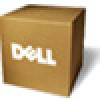Dell Brocade Adapters Brocade Adapters Troubleshooting Guide - Page 106
Port Performance, Port statistics, ESX 5.0 systems
 |
View all Dell Brocade Adapters manuals
Add to My Manuals
Save this manual to your list of manuals |
Page 106 highlights
3 Statistics where: ID of port for which you want to display statistics. This could be the PWWN, port hardware path, or user-specified port name. This could also be the adapter-index/port-index. For example, to specify adapter 1, port 1 you would use 1/1 as the port identification. Port Performance Use the BCU port --perf command to display throughput information, in number of bytes received and transmitted, for a specific physical port. port --perf [-c count] [-i interval] where: port_range Port range to be displayed. If the range exceeds 80 columns, a warning displays. The maximum ports within the 80 column limit will display. Specify port range as the adapter number/port number-adapter number/port number. For example, the range 1/0-2/0, includes adapter 1, port 0 and adapter 2, port 0. c Count. The number of iterations of the display. The default behavior is to continuously refresh. Use Ctrl-C to terminate. -i Interval. The sampling delay in seconds [default is 1 second]. The sampling interval can be between 1 and 10. ESX 5.0 systems On ESX 5.0 and later systems, the port --perf will not work unless the -c option is used. The -c option can be any number (limited by esxcli buffer size). For example, you can use the following: esxcli brocade bcu --command="port --perf -c 1" For more information on using BCU commands on ESX 5.0 and later systems, refer to "VMware ESX 5.0 and later systems" on page 66 Port statistics Use BCU and HCM to display a variety of port statistics. Following is an overview of port statistics for different adapter types: • For HBAs and Fabric Adapter ports configured in HBA mode, statistics include transmitted and received frames and words, received loop initialization primitive (LIP) event counts, error frames received, loss of synchronization, link failure and invalid CRS counts, end of frame (EOF) errors, encoding non-frame errors, and credit recovery statistics. Use these statistics to isolate link and frame errors. For example, loss of synch and loss of signal errors indicate a physical link problem. To resolve these problems, check cables, SFPs on adapters (stand-up adapters only) or switch, and patch panel connections. • For CNAs and Fabric Adapter ports configured in CNA mode, statistics include total transmit and receive counts for different sizes and types of frames. Data is included on 64-byte to 1519-1522-byte, multicast, broadcast, control, jabber, drop, control, FCS error, alignment error, code error, pause MAC control, zero pause MAC control, FCoE pause MAC control, and zero pause MAC control frames. 82 Brocade Adapters Troubleshooting Guide 53-1002145-01















